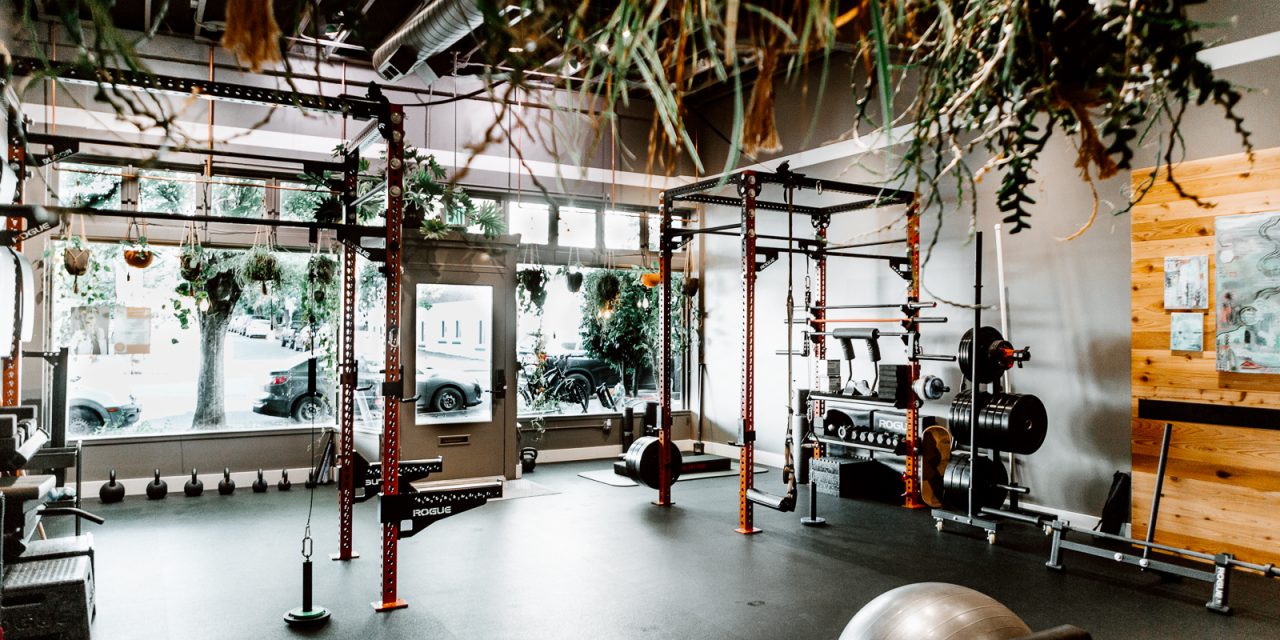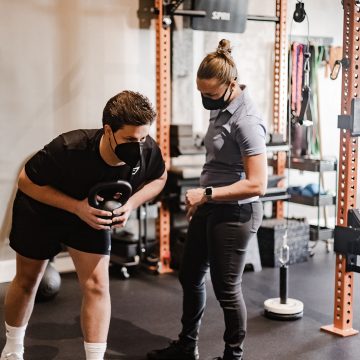5 years ago when I first started personal training, I quickly realized that many of my clients had fitness goals such as weight loss, muscle gain, strength gain, cardiovascular fitness, and sport specific performance goals that were impeded by underlying chronic pain. At the time, I struggled to help these clients because their experience of pain would not allow them to withstand the stresses needed to reach their goals. I think part of my struggle with these clients was that I created a dichotomy between Rehabilitation and Fitness. Frequently I would completely abandon the initial fitness goal to focus solely on “corrective exercises” until they were ready to do the original workouts. After years of personal training as well as my experience working/interning at Move Better, I discovered that workouts designed for the pursuit of fitness adaptation do not drastically differ from exercises designed to reduce pain but rather require a shift in one’s underlying beliefs about what fitness even is.
To give an example, I had a client in the past that wanted to increase the muscle mass and strength in his legs. He was a 55 year old computer programmer that wanted to ensure that as he aged, he would still have the capability to perform all of the activities he loved such as gardening, kayaking, blacksmithing, and bicycling. To strengthen his legs, I thought that working on squats and deadlifts would be the best method at leading him to his goals. These movements would strengthen his entire body but also teach him how to use his lower extremities through complex movement patterns that also require coordination from the rest of his body to maintain stability. Unfortunately, every time we tried to perform these exercises he would experience pain on the inside of his left knee. I decided at the time that we needed to perform “corrective exercises” surrounding the knee to facilitate rehabilitation around the knee so that we could come back to the squat and deadlift later. These “corrective exercises” consisted of a multitude of banded glute isolations, controlled leg extensions, bosu ball balance drills on one leg, and stretches targeting the musculature surrounding the knee. I still feel guilt to this day because in spite of all my efforts, when we returned to the heavy compound exercises, I was never able to get him out of pain.
The fatal flaw that I was unaware of at the time was the belief that to get him out of pain, he needed to strengthen his knee in isolation outside of the specific skills of squatting and deadlifting. What this client really needed to get out of pain was acquiring the skill of how to squat and deadlift without pain. Changing the tempo, the load, the rep range, the range of motion, switching from a barbell to a set of dumbbells/kettlebells, and most importantly honing in on WHY he was experiencing pain during these movements by evaluating HOW he was moving through the exercise could all collectively work together to change his experience through these movements.
What I have learned over the years is that the difference between an exercise prescribed for a certain fitness adaptation and an exercise prescribed for the purpose of reducing pain is simply the intention. Oftentimes clinicians at Move Better use exercises consisting of pulling, pushing, hinging, breathing, and bracing patterns that, to an untrained eye, are exactly the same exercises commonly performed in the gym to produce fitness adaptations. The key difference is that we are changing the internal focus from “I am performing this exercise to achieve the training effect” to “I am performing this exercise to focus on what moment I am experiencing pain and how can I move differently to no longer feel pain”. Once a patient is able to perform said movement without experiencing pain, then the principles of progressive overload such as increased load, reps, sets, time under tension, range of motion, reduced rest intervals, speed, and relative effort can all be applied to increase the threshold of stimulus that can be tolerated within the “pain free” parameters.
Like I have mentioned in other posts, the experience of pain through daily activities is often related to not having the prerequisite strength, mobility, or coordination to perform them properly. We here at Move Better also frequently observe that patients who are stronger, more mobile, have a better neurological connection to the movements they are performing, and psychologically establish a positive relationship with movement tend to have less pain then those who do not have these characteristics. Because of this, we believe that separating the physical activities that will make a patient more fit from the physical activities prescribed to specifically reduce pain is sometimes valuable but often unnecessary. Being in this profession for many years, I have observed many who push their exercises to a degree where they experience symptoms of overtraining, overuse, injury, and systemic fatigue. This is because they fail to allow a pain free experience, aligned with their training goals, that is validated by their internal perceptions to guide their decision making. We at Move Better want to redefine physical rehabilitation as the process of changing neurology in regards to movement. We are committed to the process of directing patients towards improved body awareness through movement and helping patients discover ways to move in a manner that feels good and is not painful.



